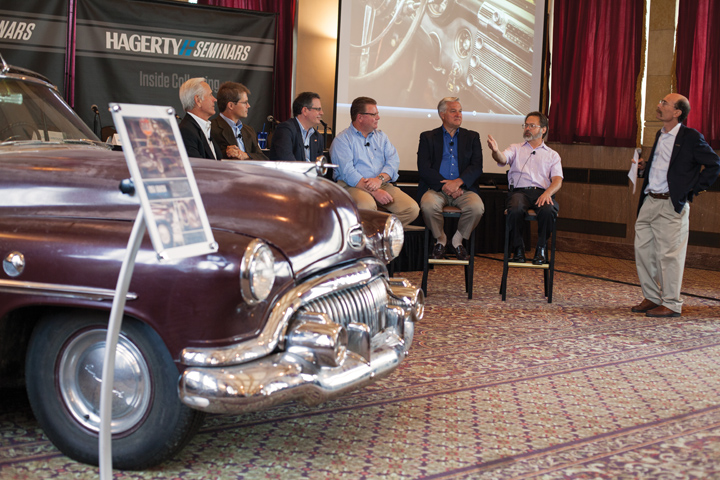Preserve or Restore?
It’s easy to decide to tear a car apart to restore it, but harder to leave it alone
Tatty paint, a shabby interior or a tired engine used to consign a car to partial or full restoration. Although the finished project often looked great, something was always lost.
On July 26, at the Concours d’Elegance of America in Plymouth, Michigan, Hagerty invited six restoration and preservation specialists to discuss when to restore and when to preserve. The panel included David Burroughs, founder of Bloomington Gold and the Survivor Car Show; Malcolm Collum, Chief Conservator for the Smithsonian Air and Space Museum; Mark Gessler, President of the Historic Vehicle Association; Tim McNair of Grand Prix Concours Preparation; and restorers Werner Maier of Masterworks Automotive Services and Brian Joseph of Classic and Exotic Services.
Using a 1951 Buick Special convertible as a prop, several panelists, including Burroughs, stressed that history and intended use are big factors. If a car belonged to President Eisenhower, it was more important to preserve it than if it had an unknown past. Collum agreed, stating that as a keeper of national treasures, he must ensure that the Apollo 11 command module retains its original pieces and patina.
Joseph and Maier explained that a full restoration could easily outstrip value. Of course, sentimental significance often trumps fiscal reason, especially if a car has a rich family history. But whether a car is restored or preserved, Maier explained that he’s “for maintaining a car in safe and operational condition.”
The panelists agreed, confirming that an original car needs to be mechanically safe, even if it means shiny new brake lines, hydraulic cylinders, suspension parts and tires, which might make the rest of the car look shabbier than ever.
Burroughs equates restoration to surgery. “You don’t do surgery unless you need to. You shouldn’t restore a car unless you have to,” partly because unrestored cars are important as templates of just how to restore a car.
Surprisingly, restorers Joseph and Maier were adamant that restoration wasn’t always appropriate, and each has often tried to talk clients out of a ground-up rebuild.
In the end, there was more agreement than discord. All panelists agreed that a car is only original once, and that the decision to preserve or restore rests on many factors, including the intended use, history and sentimental value.
So, what’s the consensus regarding the Buick? Tim McNair knows the paint, chrome and leather will improve with proper care, while Mark Gessler values it as a “witness of time” and would like to see it roadworthy and enjoyed without restoration. Meanwhile, the entire panel would be happy with that outcome, although they know it isn’t right for every car.


